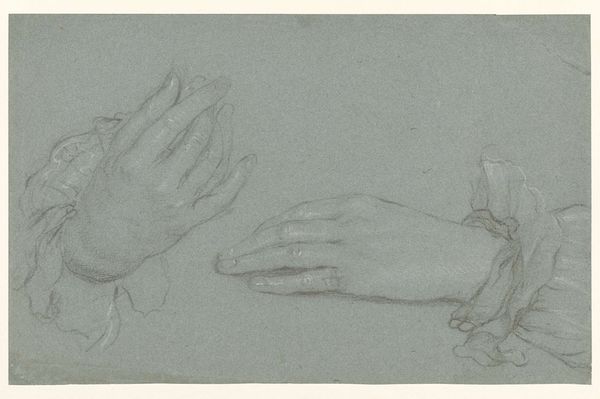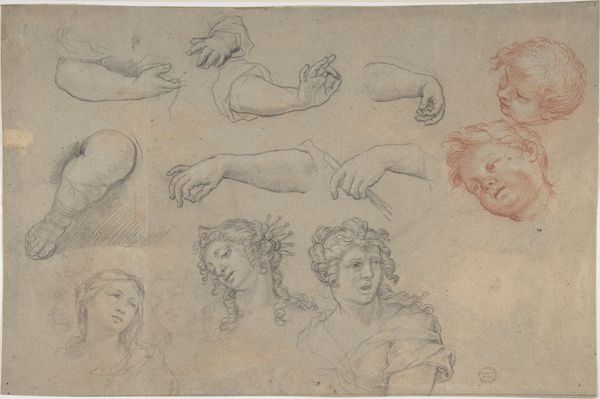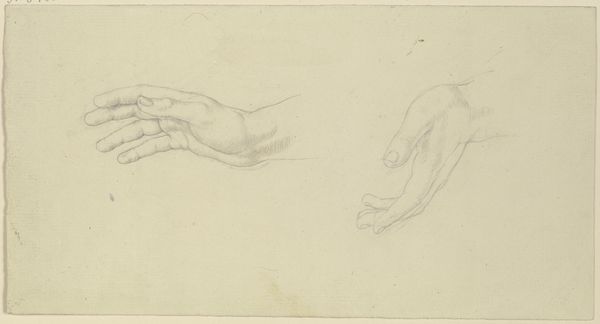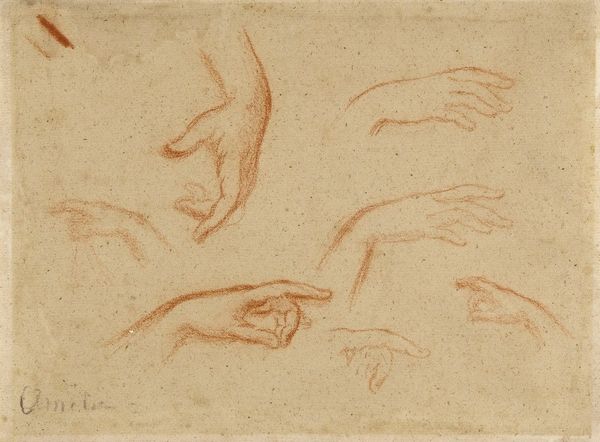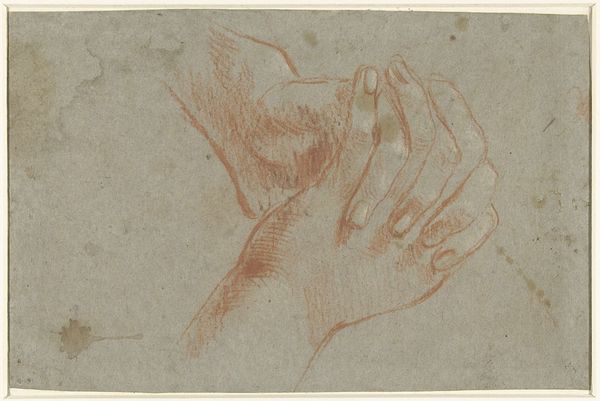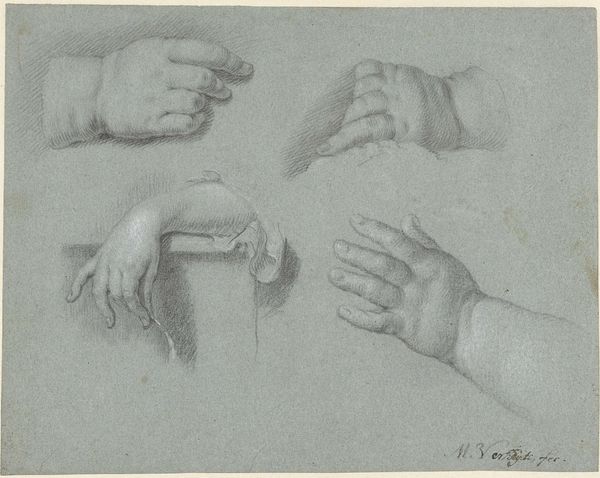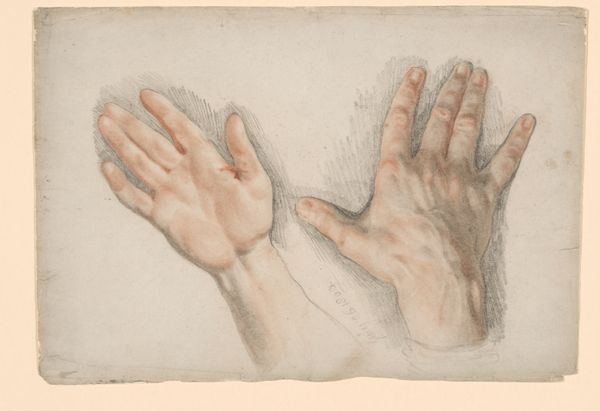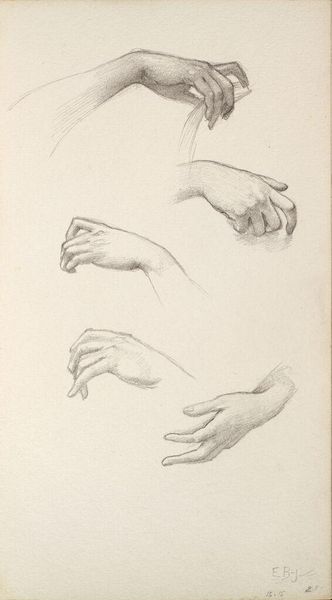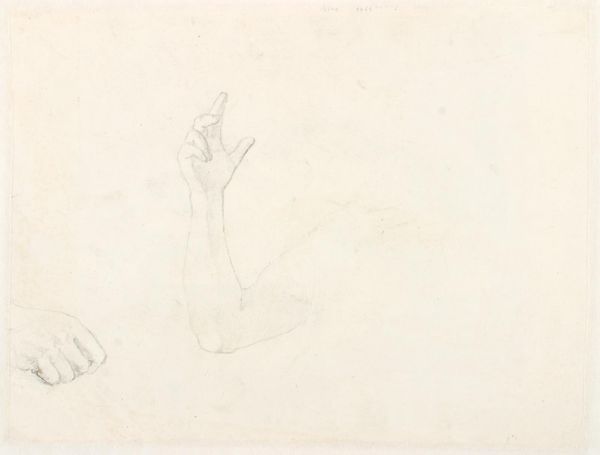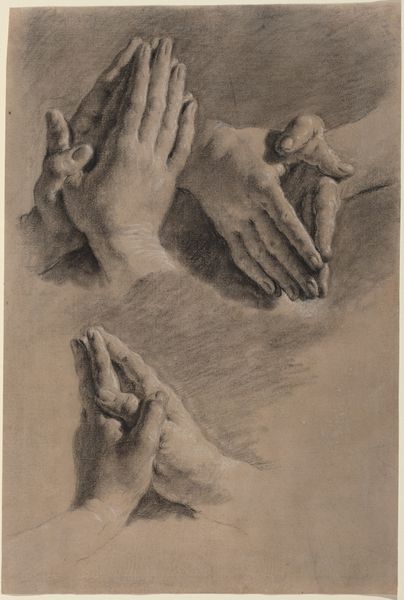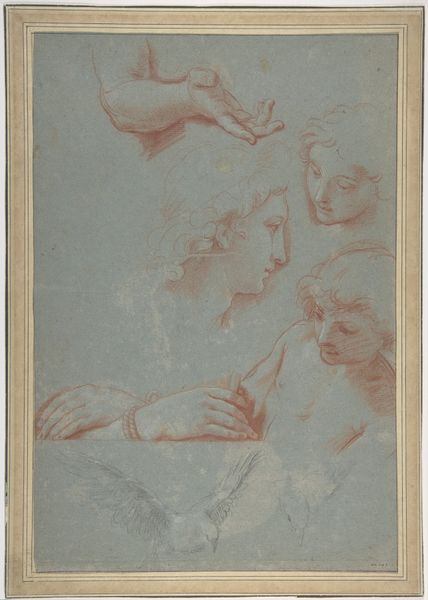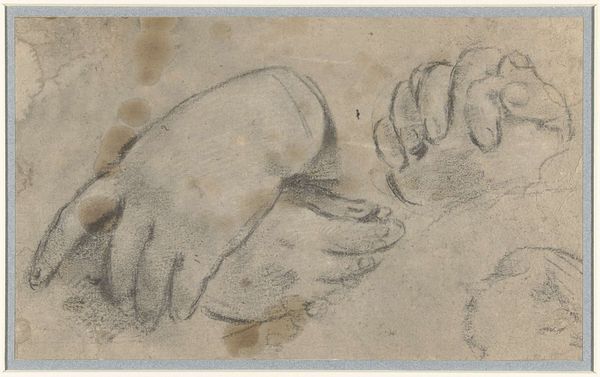
drawing, paper, pencil
#
portrait
#
drawing
#
neoclacissism
#
pencil sketch
#
paper
#
11_renaissance
#
pencil
#
sketchbook drawing
#
portrait drawing
#
academic-art
Dimensions: height 422 mm, width 277 mm
Copyright: Rijks Museum: Open Domain
Editor: This is a pencil drawing by Giuseppe Bottani titled "Study Sheet with Heads and Hands," made sometime between 1727 and 1784. I'm struck by the disembodied nature of these studies. What stories can we weave around them, or perhaps, what techniques are revealed in this particular approach to the human form? Curator: It’s fascinating to consider this work through the lens of social and historical context, isn't it? Academic art in this period, tied so closely to Neoclassicism, often reinforced power structures through its emphasis on idealized forms and historical narratives. But a study sheet like this allows us a glimpse behind the curtain. Editor: In what ways? Curator: Notice the isolation of these body parts. Separating the head and hands from a complete figure almost destabilizes the notion of a unified, powerful individual. Could this fragmentation subtly question the dominant narratives promoted by grand history painting and portraiture of the time? Bottani encourages his students to deconstruct art from the very beginning by training and teaching them to render specific parts of the body. Editor: So, it's less about portraying a specific person and more about understanding the underlying structure of human form itself? Curator: Precisely. Consider also the social hierarchy embedded in academic art training. Who had access to this kind of education? Whose bodies were deemed worthy of study? By focusing on basic elements, perhaps Bottani was, intentionally or not, democratizing the artistic process on a small scale. Or do you think I read too much into it? Editor: No, I see it. It’s about breaking down the monolithic image and questioning what makes up those images, both physically and conceptually. Curator: Indeed. And seeing those possibilities for resistance or at least for quiet subversion even within established artistic traditions is essential. I wonder, how might contemporary artists use similar approaches to challenge today's power structures? Editor: It really makes you think about what is acceptable and worthy to be preserved and studied, and, furthermore, how the focus of our artistic gaze helps us learn, critique and adapt. Thanks!
Comments
No comments
Be the first to comment and join the conversation on the ultimate creative platform.
